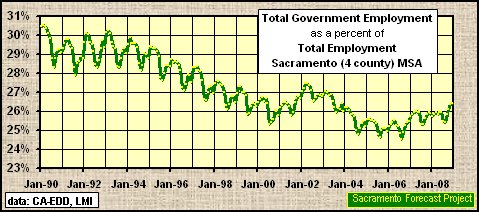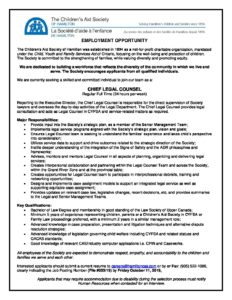[ad_1]
1. Discuss the Relocation Plan with Your Co-Parent First
If the first time the non-moving parent hears about your plan to move is when he or she is served with your Request for Order (RFO), you have already messed up.
It is important to create a paper trail and reach out to the other parent stating intent to move. Ask them what their thoughts are on the matter. It may be received well, it may not. Regardless, communicating the intent in writing is always the first step.
If you don’t communicate and just rush to court, then the court is going to think badly of you for not trying to work it out with the other parent first. This is true whether the parents have court orders or not.
2. Understand California Law for Move-Away Cases
Understanding the law is a critical part of success in a move-away case. Generally speaking, there are two laws that determine the outcome of a move-away case: Family Code 7501 and the La Musga Factors.
Family Code 7501 in Move Away Cases
California Family Code section 7501 gives parents who are “entitled to custody” of a child the presumptive right to move away with the child. That presumptive right does not mean that the parent has an absolute right to move. If the move will prejudice the rights and welfare of the child (i.e. the child will suffer detriment), the trial court has the power to restrain the move.
So what does “entitled to custody” mean? Generally, family courts have held that when a “non-custodial” parent has more than 30% timeshare, the parent requesting to move is not presumptively entitled to move. Some judges may carefully look back at the last few years before the motion was filed to answer this question.
- In sole custody arrangements, the non-custodial parent has the “substantial burden” of proving that a relocation would be detrimental to their child.
- In joint custody arrangements where both parents share “significant periods” of physical custody, neither parent has a presumptive right to move away.
Parents who share custody must petition their California family court with a move-away request, and the court will decide custody de novo – fresh, with both moving and non-moving parents starting on a level playing field.

La Musga Factors in Move Away Cases
The move away case of Marriage of LaMusga (2004) 32 Cal. 4th 1072, is a precedent-setting case involving two parents who could not amicably communicate to reach an agreement regarding custody.
The LaMusga case is probably the most important case to read and understand before filing or defending a move away case. In that case, the Court identified many factors that a trial judge is required to consider before granting or denying a move away request. Those factors include, but are not limited to, the following:
- The reason for the move – In California, the move away parent is not required to justify the move. However, even a good faith move can be stymied by the move away parent’s past behavior toward the non-custodial parent, as illustrated by La Musga. If you are moving for a better-paying job that will allow you to provide your children with more abundant opportunities, it could bolster your case. The court will be on the lookout for bad faith motivations that are intended to hamper the non-moving parent’s ability to spend time with the child.
- The child’s age – The younger the child, the more detrimental a relocation may be for the child. Young children cannot effectively grasp the concepts of time and distance. Your child’s age (and their developmental stages) can affect how well they adapt to the move and/or how hard it will be on them.
- The distance of the move – The court will consider the logistical issues raised including travel time, cost, etc. Does the time and travel expense required pose a prohibitive hardship on the stay behind parent? Will that negatively impact the parent’s ability to spend time with the child?
- Current custody arrangements – The court generally finds that children thrive on routine, and it will take the destabilizing element of your proposed move into consideration. This consideration includes legal arrangements, as well as the real-world schedule.
- The child’s desires – If the child is old enough and mature enough to to weigh in, the court may consider their preferences.
- The parents’ relationship with each other – This includes the current and historical level of cooperation and willingness to co-parent and allow access to the child. If you can demonstrate that you have cultivated a civil relationship with your co-parent that has fostered open communication, the court may be more inclined to believe that you will continue to do so after the move.
- The child’s relationship with both parents – Is the child more attached to one parent than the other?
- History of domestic violence and/or child abuse – Behavior of both parents is considered.
- Documented drug or alcohol abuse – Behavior of both parents is considered.
- The child’s ties to the community – The stronger the child’s ties to their community, the stronger this will factor in.
- The child’s health and education needs – If there are any extenuating circumstances that would make the move either positively or negatively affect the child’s health and/or education, the court will take it under advisement.
In summary, the health, safety and welfare of the child is paramount to the courts in determining the outcome of a move away case, and the court has broad discretion in making that assessment.
3. Map Out a Strategic Plan for Your Move Away Case
Now that you know what Family Code 7501 and the La Musga factors are, it is absolutely imperative to sit down and map out a strategic plan to address every one of these factors before filing a motion to move away or filing a response to a requested move away.
Understanding and strategically planning to address every one of these factors will lead to success in the case. You will not have winning arguments for every factor, so try and identify the factors that are weak and develop arguments or theories to help bolster those factors for your side.
For example, suppose you are wanting to move away with your child and the real reason is so that you can further your relationship with your boyfriend or girlfriend. If that is the only reason for the move, you will very likely not be permitted to move. As a result, find out other benefits of the move for the child, such as getting to spend more time with extended family, better schools or a lower cost of living which will allow the parent to spend more money on the child, and so forth.
Sometimes moves can happen suddenly, but it’s best to start planning as soon as you know you’ll be moving. If either party is on a tight timeline, that could be incentive to negotiate terms.
To strengthen a move-away case, you must demonstrate that your move benefits your child. Does the relocation put you closer to extended family? Are the schools better in the new neighborhood? Is the cost of living lower so that you can spend more on your child?
The same strategic analysis applies to parents who are opposing move-away orders. To prove your case, you must show that your child is better off staying local. You can offer evidence demonstrating that the move will be harmful to your child or your relationship with them.
4. Approach the Move Away Process in Good Faith [Don’t Play Games]
A move away request done in bad faith is one intended to undermine the relationship between the child and the non-moving parent. Even if the parent making the request has legitimate reasons to move, the court may still deny the request after reviewing evidence of the requesting parent’s past behavior, among other factors, as cited in Marriage of Burgess (1996) 13 Cal. 4th 25.
Trying to interfere with your co-parent’s right to see their child is bound to backfire because California family courts make custody decisions based on the best interests of each child. When a family has no history of domestic abuse, courts generally believe a child’s best interest is to maintain a relationship with both parents to the greatest possible extent.
Courts do not look kindly on a parent moving away to restrict their co-parent’s access to their child. Taking this type of “bad faith” approach is likely to hurt your chances of getting your move approved. It might even hurt or limit your own custody rights beyond just the move-away request.
In the case of La Musga, for example, the court determined that the mother did have a legitimate reason to move that was separate from any effort to disrupt the relationship between her children and their father.
However, because of the mother’s history of working against the children’s relationship with the father, the court also determined that there was enough evidence to indicate that the mother would, in fact, discourage communication between the children and their father if her request to move with the children was granted. Therefore, the mother’s request to move with the children was denied. The La Musga court decided that, if the mother moved, custody of the children would remain with the father.
5. Understand the Time and Expense of a Move Away Case
[ad_2]
Source link





More Stories
Will a review of Iran’s hijab law stop the protests? – HotAir
The Importance of How You Announce Your Company’s M&A Deal – KJK
Iran’s morality police dissolved, says prosecutor general